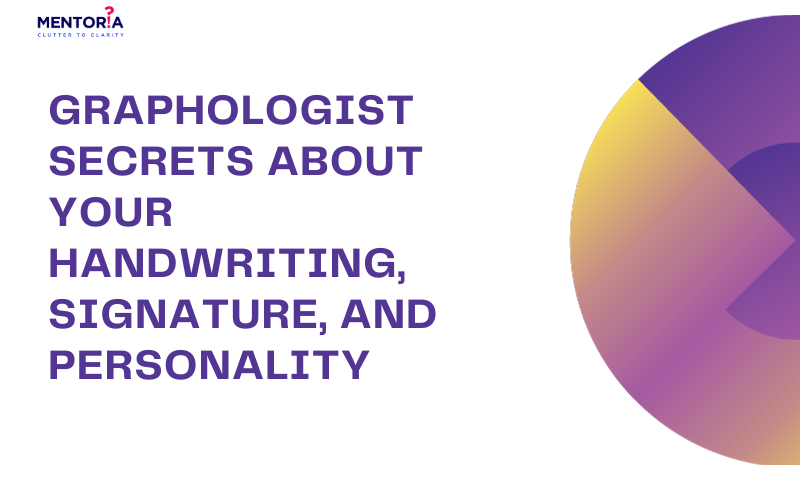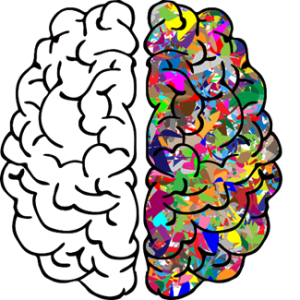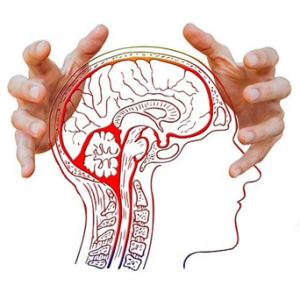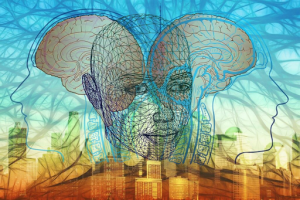Graphologist Secrets About Your Handwriting, Signature, And Personality

Jump to Section
Have you ever asked yourself what your handwriting has to say about you? No, we’re not talking about the way your handwriting looks “good” or “bad.” Specifically, we’re talking about graphology or handwriting analysis. It is the art of quite literally, reading between the lines of your handwriting to see what it could reveal about you.
Handwriting demonstrates how the writer thinks, feels, and acts, and does so clearly and immediately. It illustrates the motive behind acts and explains the tendency of the writer to behave in ways that may not be anticipated.
Why Writing?
You will ask, as children we have been taught to write in a particular way, then how and what can be revealed about us? Undoubtedly, over the years, despite learning the same manner to write as our peers, our writing still deviates from one another. One progressively changes the shapes and sizes of letters based on their comfort and likeness. The definition of graphology is therefore based on ‘deviation’ from the normal way of writing.
Writing entails three things – movement, spacing, and form. In each of these areas of writing, a graphologist studies these variations as they arise, and attaches psychological explanations to them. A very high degree of precision can be obtained by expert graphologists.
The Meaning Of Graphology
The French, decades ago, introduced the term graphology. It operates only with scripts written in the Latin or Roman alphabet. Graphology is not only an art but also a science of studying human psychology through the analysis of one’s handwriting and signature.
It is a science because it examines the structure and movement of the written forms. Precisely calculating the slants, angles, and spacing and observing pressure in magnification and with precision.
It is also an art because the graphologist always needs to take into account the overall context in which the writing takes place: the ‘gestalt’ of writing as a ‘whole.’ Thus, graphology is a natural synthesis between art and science.
Understanding The Subconscious Through Graphology
Graphology also focuses on understanding the subconscious mind through Handwriting. Graphology research is founded on two fundamental concepts. First, the human mind consists of 80 to 85 percent of the subconscious mind, while just 15 to 20 percent is the conscious mind. Second, our fingers occupy a large space in our brain, though they are very small.
In each person, the neural pathways are formed through their specific experiences. As a consequence, the transition from brain to fingers is often special, leading to different handwriting for different individuals.
Through our handwriting, Graphology focuses on the subconscious ideas expressed on paper. Not only does graphology investigate behaviour, but the subconscious or the ‘whys’ behind our actions.
Frits Cohen, a Forensic Handwriting Analyst suggested that an experienced professional can have accuracy and diagnostic success rates above 80%. A study by Kulkarni and Rohakale (2019) found in their study that graphology has a strong association with zodiac signs observations and numerological numbers.
Understanding Personality, Bias-Free!
Each person’s handwriting is as exclusive as their fingerprints. Like how fingerprints disclose your physical characteristics and identity, your handwriting shows your entire personality – your heart, mind & soul. No two individuals have the same, identical style of writing. Thus, graphologists may classify various personality traits in different individuals with the aid of graphoanalysis.
Handwriting is one such thing that is not affected or discriminated against on the basis of race, caste, sex, colour, or creed. Thereby, Graphology provides a stage for an impartial and realistic view of one’s unique personality, even in their physical absence.
Our personality and mind influence the manner in which our handwriting evolves as we age. Handwriting becomes relatively stable by the age of 14 years. As a result, graphology is not recommended for children under 14 years of age, as the evaluation may not reveal the true attributes.
Pull Out A Blank Sheet Of Paper, Write A Paragraph And Sign It!
Your handwriting and signature can reveal more about you than you might think. If your writing slants towards the left of the page, it could indicate a tendency to dwell on the past and struggle with letting go. On the other hand, if your writing leans towards the right margin, it might suggest a fear of future uncertainties.
The size of your handwriting also conveys information about your personality. Small handwriting often suggests shyness, while big and bold writing can reflect an outgoing and confident personality. If your writing falls somewhere in between, it may indicate a focused and balanced individual.
Spacing between words can be revealing too. Large gaps between words may signify independence, while closely spaced words may indicate a strong family orientation.
The pressure you apply while writing can also speak volumes. Heavy pressure often suggests commitment and determination, while light pressure may indicate empathy and sensitivity.
And when it comes to your signature, legibility matters.
A clear and legible signature suggests self-assuredness and comfort in your own skin. Conversely, an illegible signature may indicate a preference for privacy and a more reserved nature. So, the next time you put pen to paper, remember that your handwriting and signature can tell a story about your personality and tendencies.
How Will Graphology Help You?
Graphology is a tool for not only recognising and improving an individual’s strengths and weaknesses but also for developing psychological attributes, skills, and abilities. To establish the desired changes in the person, graphotherapy utilises neural pathways.
Your handwriting reflects your personal life. Graphotherapy is a two-way process; by making changes in our handwriting, it is possible to alter our subconscious thinking patterns. In identifying and improving skills, and traits such as Self-Confidence, Will Power, Anger Management, Decision Making, and the like, graphology can be successful. Thus, journaling is a recommended method in the graphotherapy process.
Did You Know Graphology Can Be Used To Catch Criminals?
Graphology can be used in the recruiting process to obtain insights into the skills possessed by the prospective applicant without undertaking the exhausting interviewing process because the candidate’s signature represents their public life.
Forensic Graphology studies the handwriting of criminals that are found in blackmail or ransom notes and forged signatures. Even though the analysis cannot be used as evidence, it is extremely useful to Negotiators in understanding the personality traits of the criminals to a reasonable degree of certainty.
It can also be used to evaluate the abilities and skills of current employees to align them with a more appropriate role. Employees may use Graphotherapy to improve the skills needed by their work profile, such as imagination, analytical abilities, creativity, decision-making, team play, and more.
Interested In Graphology? We’re Here To Help
If Graphology has grabbed your attention and sparked some curiosity, we’re here to provide you with all the help! Kick-start your journey with Mentoria and discover the right fit for you. Feel free to call us to speak to our career mentors and choose the right guidance plan that suits your needs.
Mentoria’s career guidance programme enables you to choose your perfect fit from 3 streams, 850+ courses, and 12,000+ careers, and discover what will bring out the best in you.










